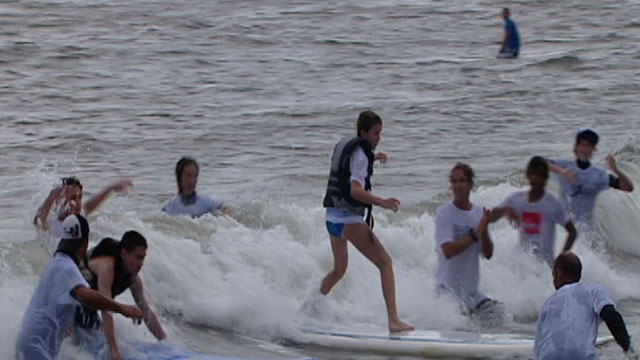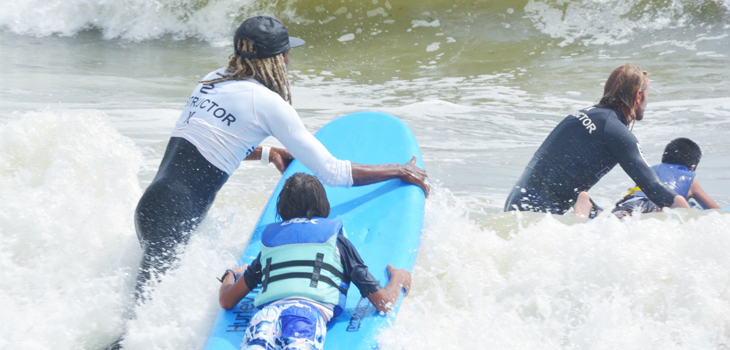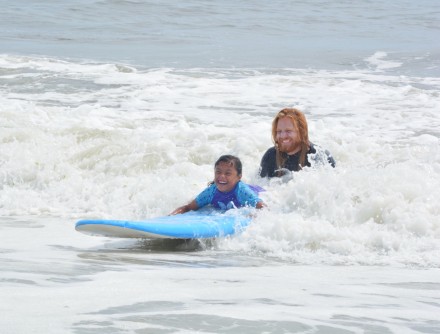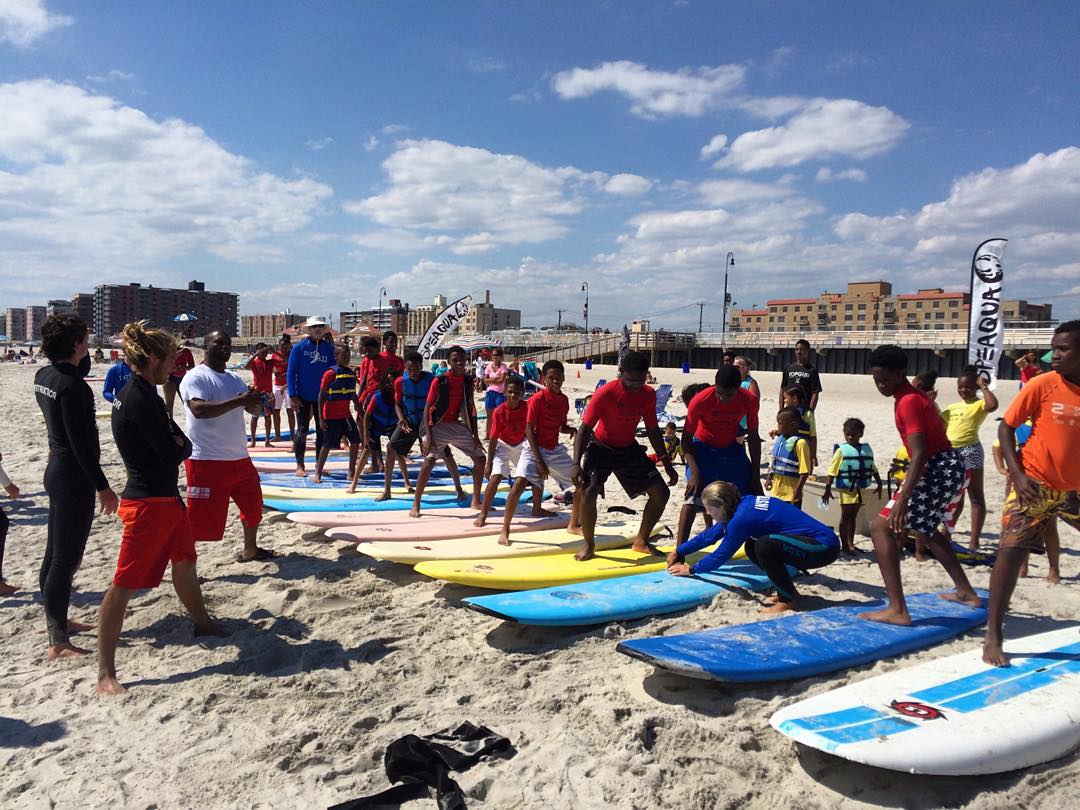It’s a ritual of summer all along the shore, kids learning to surf. And now 13-year-old Guiliana DiBernardo is getting the opportunity.
“When you are lying on the board you pop up, and then bend your knees,” an instructor tells her. “That’s not very hard, is it?”
This scene at the beach would be unremarkable except for one thing: Guiliana is blind.
It takes a special kind of bravery to surf. But imagine trying to ride the ocean’s fury when you cannot see.
Guiliana is one of more than dozen visually impaired teenagers receiving instruction this sun-splashed day from a Long Beach, N.Y., organization called Surf For All.
Some of the teens, including Guiliana, live in a world of total darkness, unable even to sense light. Others have limited sight, such as tunnel vision. All are getting an opportunity that once would have seemed unthinkable.
“If you told these kids two weeks ago, before they knew they were coming here, that they were going to surf, they probably couldn’t fathom it. They would be like, ‘No Way,'” says Will Skudin, a world-class surfer and a co-founder of Surf For All.
“To come out here and to not only just try surfing but to be successful at it — I mean, it’s got to lift them up to think how much more they can accomplish,” Skudin said.
An instructor begins by letting Guiliana feel the surfboard with her hands. The instructor stands on the board and guides Juliana’s hands along her feet and legs, to give the teen a better sense of how her own feet and legs should be positioned.
“Bend, bend, bend! Arms out to the side,” the instructor says.
It’s a scene repeated up and down the beach before the teens wade into the surf — instructors holding their hands, life preservers strapped to their chests, surfboard leashes wrapped around their ankles, lifeguards all around them in the water.
The waves this day are no more than two feet high, big enough to provide a decent ride but not really knock anyone around. And the tide is just right; at no time are the teens in water over their heads. In short, the conditions are perfect.
One by one, the teens begin to surf; a cheer erupts along the water’s edge each time one of them glides to shore. And now Juliana is on her board, bobbing in the water, waiting for her chance to “hang 10.”
Guiliana’s dad, Rich, is standing on the beach, his camera ready.
“Are you seeing this?” he calls to Guiliana’s mother, almost in disbelief. He is beaming.
An ocean swell builds — and there is Guiliana beginning to stand as the water lifts her up. Her instructor, Cliff Skudin — Will’s brother and another Surf For All co-founder — is leaning on the back end of the board to give it greater stability, as the cresting wave begins to carry both of them in.
“Go Jules! Go Jules!” her mother shouts. And now another cheer rises up from the shore.
Once she’s back on the beach, Guiliana encourages her best friend, Danielle Melendez, to give it a try.
“At first you are going to feel a little nervous, but then you feel the water and you feel more relaxed,” Guiliana says.
As Danielle heads into the water, her bravery suddenly gives way to tears. She freezes. Her mother and Surf For All volunteers surround her, offering encouragement. The pep talk works, and within minutes she, too, is riding a wave.
“At first I was really scared, but it was awesome!” Danielle says. “But what did it feel like?” a volunteer asks. “I don’t know! I was just riding the wave!”
Surf For All was formed nearly a decade ago, initially to teach kids with autism how to surf. Last year, the program expanded to help children with disabilities, including the blind, and wounded warriors returning from Afghanistan and Iraq.
“We had twice as many kids this year as last year, because the kids kept telling their friends, ‘You have to try this! You have to try this!” says Jim Mulvaney, the parent of an autistic son and another Surf For All co-founder.
“Disabled people sometimes feel isolated because they generally can’t do stuff without assistance,” Mulvaney says. “Now to be part of group, part of a club, where everybody’s going and they know there is a place for them to go — it takes away that sense of isolation.”
All afternoon along the beach, you can see the camaraderie and confidence building, like a wave.
“To me, it’s like flying. When you are on the board, you are just standing up and you feel the wind and the water … it’s amazing,” says Meghan Fink, an 11th grader from Seaford, L.I., who has limited sight.
“Intense!” a boy shouts as he walks out of the water. “I feel like Rocky!”
Their parents are also exhilarated.
Guiliana’s mom, Maria, says she could never have imagined this day when her daughter was an infant struggling to survive in a hospital neonatal intensive care unit, after being born premature at 23 weeks.
The doctors “really didn’t give her much hope,” her mom says.
“They would call me up in the middle of the night every night and say, ‘I think you should come down here. We’re not sure she is going to make it until morning.’ And here she is 13 years later,” she says. “It’s amazing.”




